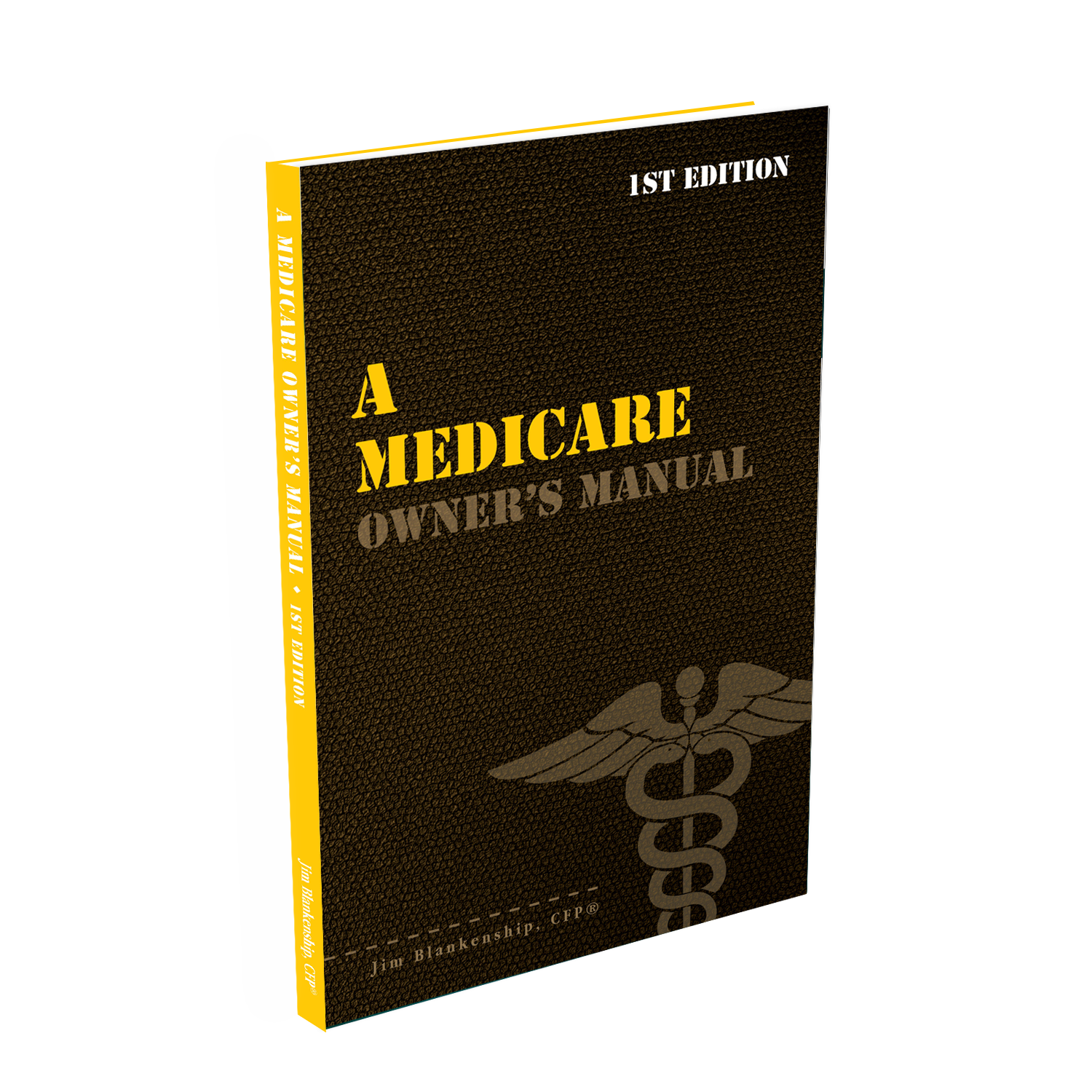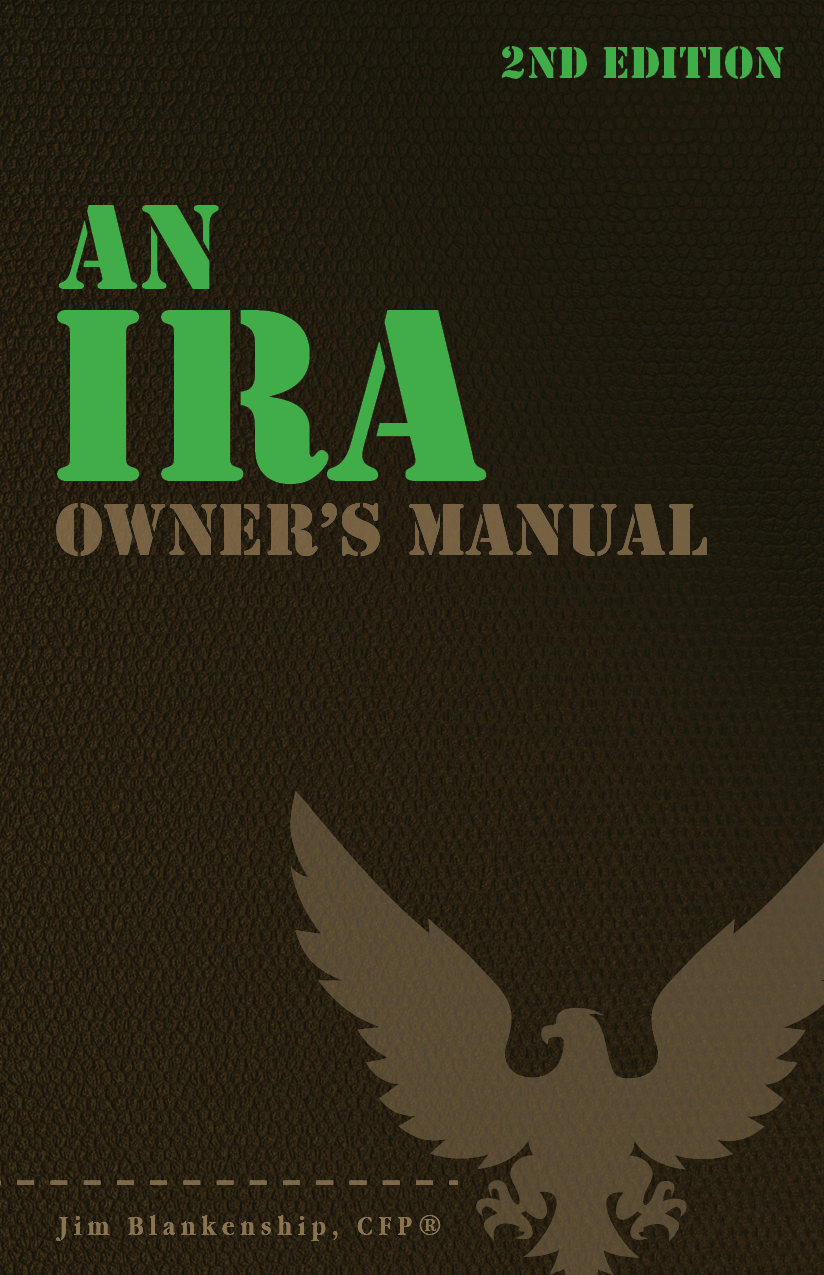One of the more unique types of retirement accounts is the Simplified Employee Pension IRA, or SEP IRA for short. This plan is designed for self-employed folks, as well as for small businesses of any tax organization, whether a corporation (S corp or C corp), sole proprietorship, LLC, LLP, or partnership. The primary benefit of this plan is that it’s simplified (as the name implies) and very little expense or paperwork is involved in the setup and administration of the plan. The SEP becomes less beneficial when more employees are added. There are additional options available in other plans (such as a 401(k)) that may be more desirable to the business owner with more employees. SEP IRAs have a completely different set of contribution limits from the other kinds of IRAs and retirement plans. For example, in 2015, you can contribute up to $53,000 to a SEP IRA. That amount […]
IRA
Mandatory Retirement Plans
A few weeks ago I finished a paper arguing for mandatory retirement contributions from both employers and employees. Though arguably the paper will not come close to changing public policy on retirement plans, it did raise some arguments in favor of the United States adopting a mandatory savings plan. In the paper I explained that research has shown that individuals risk not having enough saved for retirement. This could be due to employees not having a retirement plan through work or because employees face an abundance of mutual fund options in the plan that they don’t know where to begin. Some of these employees choose the default option or simply go with what a colleague recommends. Another problem the paper addresses is the declination of defined benefit pensions. Such pensions are employer sponsored and funded, thus removing funding an investment risk from the employee. At retirement the employee receives a […]
De-stress Your Investing
Over your working career is possible you’ll accumulate multiple retirement accounts if you switch jobs frequently and there’s also the possibility that you’ll have multiple IRAs depending on if you’ve moved switched advisers, or wanted to give a fledgling adviser their first sale. Eventually, annual statements start pouring in from all of these accounts and it can be difficult and stressful to keep track of all of the accounts and where your money is being held. For example, you may have to 401(k) plans from two previous employers in addition to the plan you have with your current employer. You may also have two or three IRAs that you’ve opened over the years and whether or not their traditional or Roth can complicate things even more. Here’s a way to organize your retirement account and reduce your stress when it’s time to receive statements. Consider combining your old 401(k) plans […]
Should You Invest Dollars or Percentages?
In many employer sponsored plans such as a 401k, 403b, 457, or SIMPLE employees are generally given the option of deferring a fixed dollar amount or fixed percentage of their income. The question becomes which category to choose when initially enrolling in the plan and whether or not to change the original decision. Generally, the wiser decision is to choose (or switch to) the fixed percentage. The reason is that by choosing a percentage, you really never have to worry about increasing your contributions. For example, an individual starts a job earning $50,000 annually and decides to contribute 10% annually to his retirement plan which is $5,000 per year.
What Plans Can I Rollover My Retirement Plan To?
When you have a retirement plan, or many different types of retirement plan, you may be faced with decision-points when it would be helpful to rollover one plan into another plan. But do you know which type of plan I can rollover my retirement plan into? What follows is a description of the types of accounts that you can rollover each particular source account into, along with the restrictions for some of those accounts. The IRS also has a handy rollover chart which describes these rollovers in a matrix.
Illinois’ Automatic Roth IRAs for Employees
Recently Illinois’ Governor Pat Quinn signed into law the Illinois Secure Choice Savings Plan. This plan provides an automatic Roth IRA via payroll-deduction for some employees who do not have an employer-sponsored retirement savings plan. Essentially this law will require employers with 25 or more employees to establish a payroll deduction program permitting the workers to defer earnings into a Roth IRA, beginning in June 2017. Employees will be automatically enrolled (hence an automatic Roth IRA), but the workers will have the opportunity to opt out of the program. The automatic enrollment includes a 3% salary deferral, but the employee can increase the deferral amount, up to the legal limitations (in 2015 it’s $5,500, $6,500 for folks over age 50). There is no company matching with this program.
Where to Start With Retirement Savings
Today, we have so many choices for our retirement savings that it can be difficult to choose which sort of account to contribute to. If you are fortunate enough (as many are) to have more than one type of retirement plan available to you, in what order should you contribute to the accounts? Right now, at the beginning of a new year, is an excellent time to start with retirement savings. Qualified Retirement Plans First of all, many folks who are employed by a company have some sort of tax-deferred, qualified, retirement savings account available. These accounts go by many names – 401(k), 403(b), 457, and deferred compensation. These accounts are collectively referred to as qualified retirement plans, or QRPs. QRPs do not include IRAs – this is another type if retirement savings account with some different rules. A QRP account is a good place to start when contributing to […]
2015 IRA MAGI Limits – Married Filing Separately
Note: for the purposes of IRA MAGI qualification, a person filing as Married Filing Separately, who did not live with his or her spouse during the tax year, is considered Single and will use the information on that page to determine eligibility. For a Traditional IRA (Filing Status Married Filing Separately): If you are not covered by a retirement plan at your job and your spouse is not covered by a retirement plan, there is no MAGI limitation on your deductible contributions. If you are covered by a retirement plan at your job and your MAGI is less than $10,000, you are entitled to a partial deduction, reduced by 55% for every dollar (or 65% if over age 50), and rounded up to the nearest $10. If the amount works out to less than $200, you are allowed to contribute at least $200. If you are covered by a retirement […]
2015 MAGI Limits for IRAs – Married Filing Jointly or Qualifying Widow(er)
Note: for the purposes of IRA MAGI qualification, a person filing as Married Filing Separately, who did not live with his or her spouse during the tax year, is considered Single and will use the information on that page to determine eligibility. For a Traditional IRA (Filing Status Married Filing Jointly or Qualifying Widow(er)): If you are not covered by a retirement plan at your job and your spouse is not covered by a retirement plan, there is no MAGI limitation on your deductible contributions. If you are covered by a retirement plan at work, and your MAGI is $98,000 or less, there is also no limitation on your deductible contributions to a traditional IRA. If you are covered by a retirement plan at your job and your MAGI is more than $98,000 but less than $118,000, you are entitled to a partial deduction, reduced by 27.5% for every dollar […]
2015 MAGI Limits – Single or Head of Household
Note: for the purposes of IRA MAGI qualification, a person filing as Married Filing Separately who did not live with his or her spouse during the tax year, is considered Single and will use the information on this page to determine eligibility. For a Traditional IRA (Filing Status Single or Head of Household): If you are not covered by a retirement plan at your job, there is no MAGI limitation on your deductible contributions. If you are covered by a retirement plan at work, if your MAGI is $61,000 or less, there is also no limitation on your deductible contributions to a traditional IRA. If you are covered by a retirement plan at your job and your MAGI is more than $61,000 but less than $71,000, you are entitled to a partial deduction, reduced by 55% for every dollar over the lower limit (or 65% if over age 50), and […]
Important Tax Numbers for 2015
For 2015 the IRS has given the new limits regarding retirement contributions as well as estate and gift tax exemptions. Regarding retirement contributions employees may now defer $18,000 annually to their employer sponsored plan including a 401k, 403b, and 457 plans. This is an increase from last year’s $17,500 amount. Additionally, employees age 50 or older can now make an age based catch-up contribution of $6,000 which is a $500 increase from last year’s $5,500 amount.
What is a QLAC?
In July of 2014 the IRS issued final regulations regarding the allowance of qualified longevity annuity contracts in employer sponsored plans such as 401ks, 403bs and 457b plans as well as IRAs. What it Means and What it Means to You QLAC stands for qualified longevity annuity contract. This means that a person is allowed to take up to 25% of their overall account balance but not more than $125,000 in their retirement plan and use that money as premium to fund a longevity annuity contract. Additionally, the annuitant must start the annuity by no later than the first day of the month following the attainment of age 85. They can however, start earlier. In a 401k, 403b or 457b plan a QLAC can be purchased up to the maximum of $125,000 across all accounts (IRAs included), but not more than 25% of the account balance per plan.
Qualified Charitable Distributions Extended for 2014
With the passage of the Taxpayer Tax Increase Prevention Act of 2014, the qualified charitable distribution (QCD) from your IRA is available through the end of the year under normal rules. This means that you can, if you’re age 70½ or older, make direct distributions from your IRA to a qualified charity or charities, not counting the distribution as income and not itemizing the charitable contribution.
Retirement vs College Saving in a Nutshell
Those of us who are parents know this conflict very well – should we put aside money for retirement, or for college saving? It may come as a surprise, but a general rule of thumb with regard to this conflict is to put money aside for retirement first, and college second. The reason behind this is that there are many ways to pay for college, such as grants, scholarships, work-study programs, student loans, parent loans, etc.. With this plethora of choices, it becomes clear that your student’s college funding needs can be met from quite a few angles, none of which should have a dramatic impact on your overall net worth (or your student’s). On the other hand, no one will give you a scholarship to retire. It is solely up to you and your savings (coupled with Social Security and any available pensions).
Five Things You Need to Know About Retirement Plans
Listen to this post: Most of you have one or more types of defined contribution retirement plans, such as a 401(k), 403(b), 457, IRA, SEP-IRA, or any of a number of other plans. Each type of plan has certain characteristics that are a little different from other plans, but most of them have the common characteristic of deductibility from current income and deferred taxation on growth. 1. Each dollar you defer is worth more than a dollar. It’s true. As you defer money into your retirement account, each dollar that you defer could be worth as much as $1.66. How, you might ask? Since you are not taxed on the dollar that has been deferred into the retirement account, your “take home” pay only reduces by the amount that is left over after taxation. For example, if you’re in the 25% bracket, generally your income will only reduce by […]
Wants and Needs
Sometimes when we need more money for a specific goal in the future such as retirement, college, a down payment on a home or an emergency fund we may feel that before these things can happen we need to make more money. We may feel that once our incomes are up to a certain level that we’ll be able to afford to save for those goals. It may not be necessary to earn more in order to achieve the above goals. For many folks the solution is simply to prioritize between wants and needs. In other words, learning to distinguish between the wants and the needs in your life and then reallocating your money to fund retirement or college goals without having to ask for a raise or get a second job.
A new way to fund your Roth IRA
As you plan and save for your retirement, it’s nice to have multiple types of taxation for your income sources. You may have a pension, Social Security, and a traditional IRA, all of which are taxed to some degree or another. Adding to this list you might have a Roth IRA which generally will provide you with tax-free income in retirement. The problem with the Roth IRA is that you have some strict limits on the amounts that you can contribute, and typical Roth Conversion strategies are costly and complicated. With the recent pronouncement from the IRS in Notice 2014-54, there is a brand new, sanctioned method, to fund your Roth IRA.
Happy 40th Anniversary, IRA!
This year marks the 40th anniversary of the Individual Retirement Arrangement (IRA). In 1974 via the ERISA law, Congress made this new type of retirement plan available for employees whose employers who could not provide them with the traditional type of retirement plan. In 1981, the plans were made generally available to all taxpayers. The Tax Reform Act of 1986 limited the deductibility of IRAs by income. 1997 saw the launch of the Roth IRA, as a part of the Taxpayer Relief Act of 1997. This type of IRA came with no deductibility, but earnings (and contributions) would be tax free upon distribution, following the rules associated with the accounts. With the exception of changes to limits of contributions, income limits, and catch-up provisions, little has changed for these accounts since 1997, with the exception of the introduction of the Roth-IRA-like myRA account that was established in 2014 for the […]
2015 Contribution Limits for Retirement Plans
The IRS recently published the new contribution limits for various retirement plans for 2015. These limits are indexed to inflation, and as such sometimes they do not increase much year over year, and sometimes they don’t increase at all. This year we saw a few increases for some contribution amounts, and the income limits increased for most types of accounts after virtually no changes to the contribution amounts in 2014.
IRS Notice 2014-54: Will This Clarify NUA Basis Allocation?
Recently the IRS issued a Notice, 2014-54, which details some information regarding the allocation of pre-tax funds from a qualified plan (such as a 401(k) plan) into a Roth IRA. This is a clarification of a question that has been on the minds of folks in the financial services industry for some time, and it’s a good result. Now the question becomes: does this help to clarify NUA basis allocation strategies? If you’d like additional detail on Notice 2014-54, you can find the actual text of the Notice by clicking this link. What I find interesting about this Notice is that this is the first time that the IRS has used this interpretation of the rules referenced specifically in IRC Section 402(c)(2), which is the code section I’ve referenced before regarding allocation of basis for Net Unrealized Appreciation (NUA) treatment for employer stock. (See more information in this most recent […]


 Sterling Raskie, MSFS, CFP®, ChFC®
Sterling Raskie, MSFS, CFP®, ChFC® The latest in our Owner’s Manual series, A 401(k) Owner’s Manual, was published in January 2020 and is available on
The latest in our Owner’s Manual series, A 401(k) Owner’s Manual, was published in January 2020 and is available on  A Medicare Owner’s Manual, is updated with 2020 facts and figures. This manual is available on
A Medicare Owner’s Manual, is updated with 2020 facts and figures. This manual is available on  Social Security for the Suddenly Single can be found on Amazon at
Social Security for the Suddenly Single can be found on Amazon at  Sterling’s first book, Lose Weight Save Money, can be
Sterling’s first book, Lose Weight Save Money, can be  An IRA Owner’s Manual, 2nd Edition is available for purchase on Amazon. Click the link to choose the
An IRA Owner’s Manual, 2nd Edition is available for purchase on Amazon. Click the link to choose the  Jim’s book – A Social Security Owner’s Manual, is now available on Amazon. Click this link for the
Jim’s book – A Social Security Owner’s Manual, is now available on Amazon. Click this link for the  And if you’ve come here to learn about queuing waterfowl, I apologize for the confusion. You may want to discuss your question with Lester, my loyal watchduck and self-proclaimed “advisor’s advisor”.
And if you’ve come here to learn about queuing waterfowl, I apologize for the confusion. You may want to discuss your question with Lester, my loyal watchduck and self-proclaimed “advisor’s advisor”.